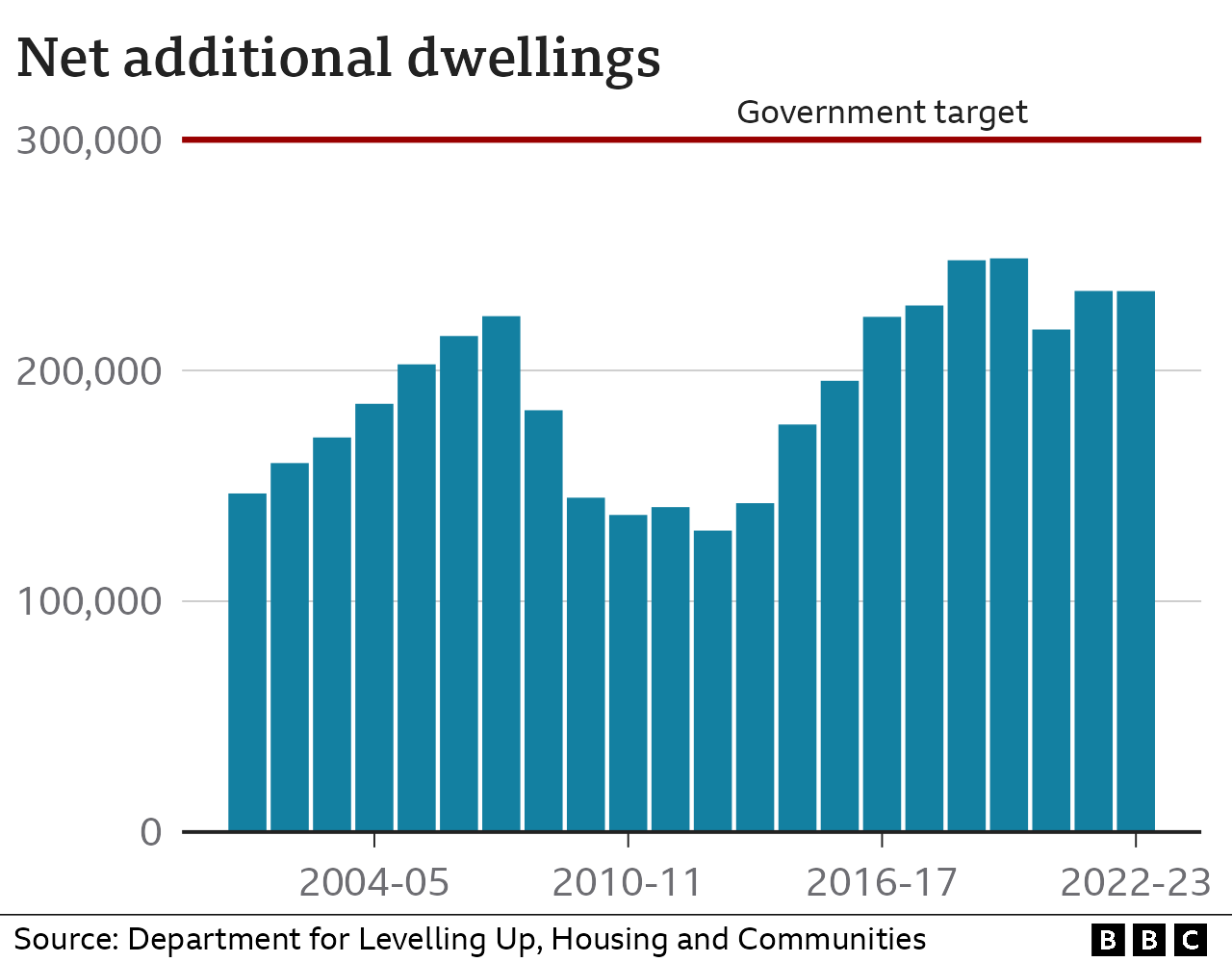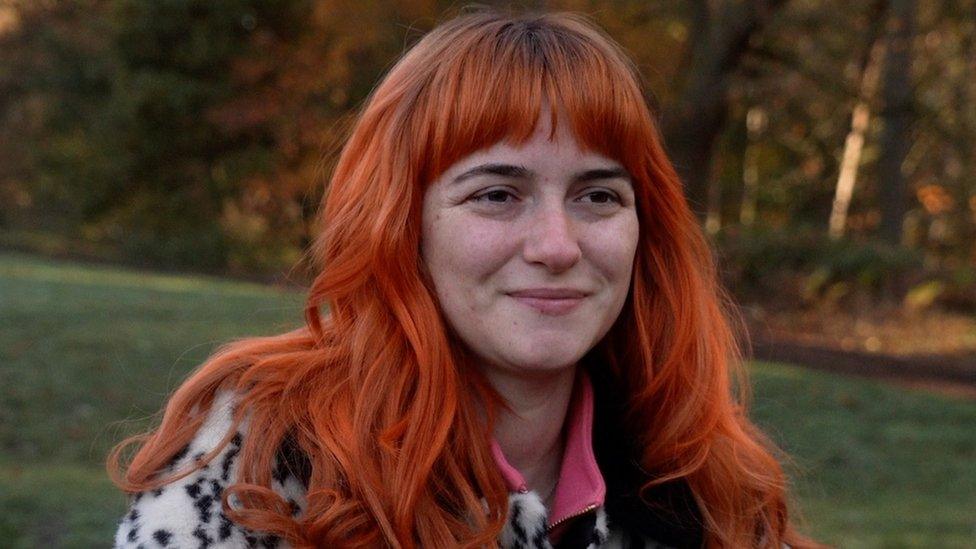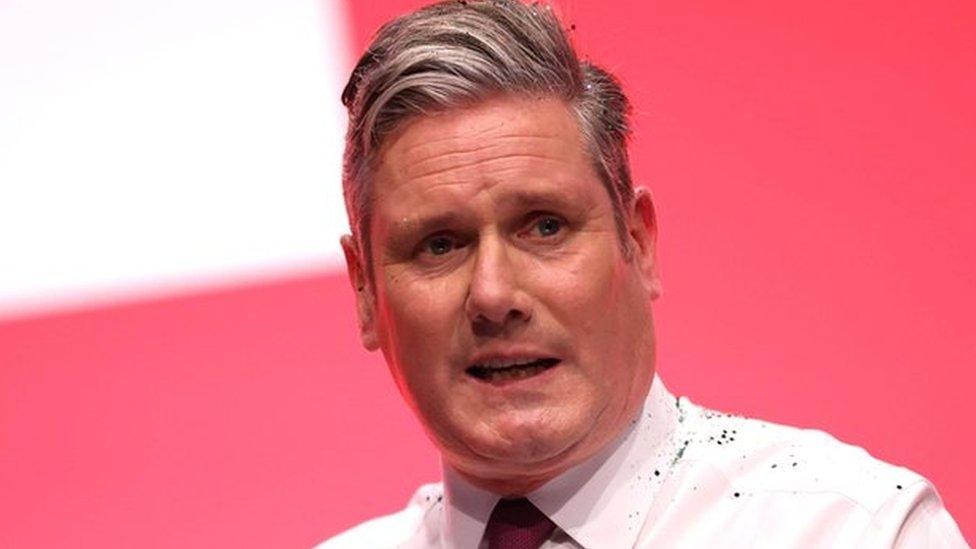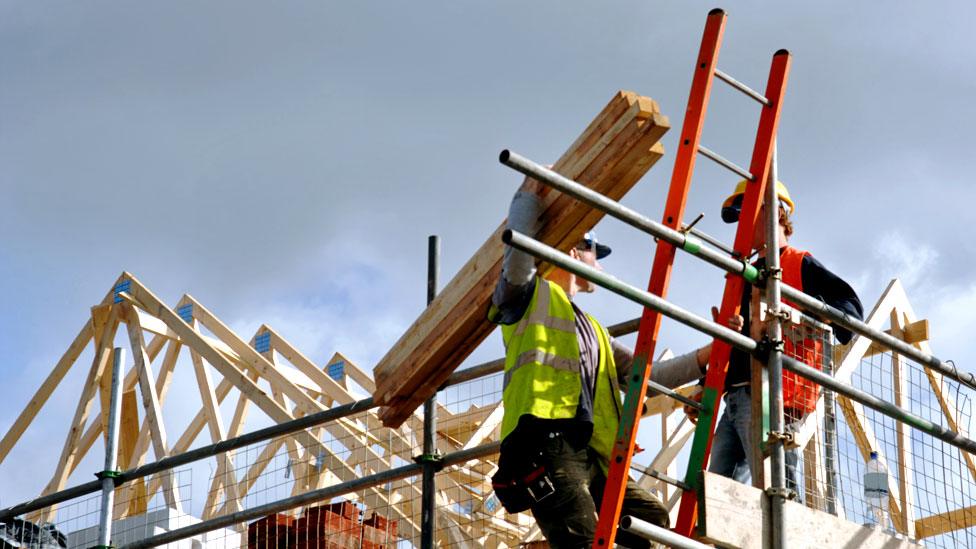Government's annual housebuilding target not yet met, figures show
- Published
- comments

The government fell short of its annual housing target again last year, according to new figures.
There were 234,397 net additional dwellings in England in 2022/23, a similar figure to the previous year.
The 2019 Conservative manifesto promised to build 300,000 homes a year in England by the mid-2020s.
However, the government has said it is on track to meet its target of one million more homes by the end of this Parliament.
The number of net additional dwellings includes new builds, houses being converted to flats, or commercial buildings switching to domestic use, as well reflecting demolished homes.
Housebuilding reached a peak in 2019-20, with 248,591 net additional dwellings - the highest figure for any financial year so far this century.
Numbers fell during the pandemic, partly due to Covid restrictions, before picking up again.
However the post-Covid recovery in housebuilding now appears to have stalled.
There was little change from the 2021-22 figure, which was 234,462, according to data published by the Department for Levelling Up, Housing and Communities, external.

Are you struggling to get on the property ladder? Get in touch.
WhatsApp: +44 7756 165803, external
Tweet: @BBC_HaveYourSay, external
Please read our terms & conditions and privacy policy

The Home Builders Federation said while the latest figures only covered up to March 2023, "all leading indicators show rapid slides in future output".
A spokesman said: "Weakening the requirements of councils to plan for the homes communities need and a lack of local authority capacity to process planning applications has seen investment in new sites collapse and a lack of support for buyers is further driving down delivery."
Earlier this month, the government announced it wanted to remove the requirement for planning permission to convert a house into two flats, to help boost new homes.
It hopes to implement the changes next year, following a consultation.
In 2022-23 there were 4,499 additional homes created from conversions between houses and flats.

Kayleigh Wrigg, 28, and her partner Connor have been together for nine years, but live separately with their parents in Bedfordshire as they try to save to buy a house.
She says owning their own home feels "barely achievable", despite both of them working full-time.
"The house prices are just insane," she told the BBC. "If we went further north we could potentially look at it but that's moving further away from everything we know and love."

Kayleigh Wrigg says the rising cost of living makes it difficult to save for a deposit for her own home
However, there is often a tension between the demand for new housing and the impact on existing communities.
Murray and Jane Stewart are among residents opposing proposals for 3,750 new homes near Barton-le-Clay in Bedfordshire.
The applicants describe the proposed development as a "highly-sustainable community" which would deliver family housing, rental properties and affordable homes along with local facilities.
But Murray and Jane have concerns about the proximity to flood plains, heritage sites and protected areas, as well as a lack of infrastructure.
"We're a long way from everything," Jane said. "Thousands of cars would be driving through tiny narrow roads, villages without pavements."
Murray added: "It's very hard to get a GP appointment, as in many parts of the country. Where would people go to work? There's no employment."
The couple stress they are not opposed to housebuilding, but say the current system does not always deliver the right homes in the right places.
"It's about how you build, not whether you build," Murray said.
"There's a lot of acceptance that we need better housing stock, we need social housing... But certainly the impact on infrastructure has left people feeling they're left behind, and there's a sort of lottery nature of how development happens that gives people a sense of uncertainty and unsettledness."

Jane and Murray say they don't oppose housebuilding but that new homes need to be in suitable locations
Housebuilding is expected to be a key battleground at the next general election, which must be held by January 2025.
In December, the government said councils would get more flexibility over meeting centrally-set housing need targets, after a threatened rebellion by some Tory MPs.
Critics of the government-set targets had argued they undermined powers of local councils to decide where building takes place.
But others have raised concerns the changes will lead to fewer homes being built.
Labour has pledged to restore local housing targets and "bulldoze" through planning rules to build 1.5 million homes during the five years of the next Parliament, if it wins power. This broadly matches the government's annual target of 300,000 new homes.
Shadow housing secretary Angela Rayner said: "When swift and meaningful action is required, this government is taking us backwards, with fewer houses delivered than last year and a generation locked out of a secure home."
Polly Neate, chief executive of housing charity Shelter, said: "Today's statistics show that despite the escalating housing emergency, very little has changed in a year and we are still miles away from building the number of homes we need."
She called for "urgent action" and a commitment from all political parties "to build a new generation of safe and affordable social homes with rents tied to local incomes".
A Department for Levelling Up, Housing and Communities spokesperson said: "We need to build more homes, but the latest figures show that despite the difficult economic climate we are on track to meet the manifesto commitment of delivering one million homes over this Parliament.
"Backed by £10bn investment in housing supply since the start of this Parliament we are making good progress and our long-term housing plan will allow us to go further and build the homes we need."
Related topics
- Published10 October 2023

- Published6 December 2022

- Published2 August 2024
